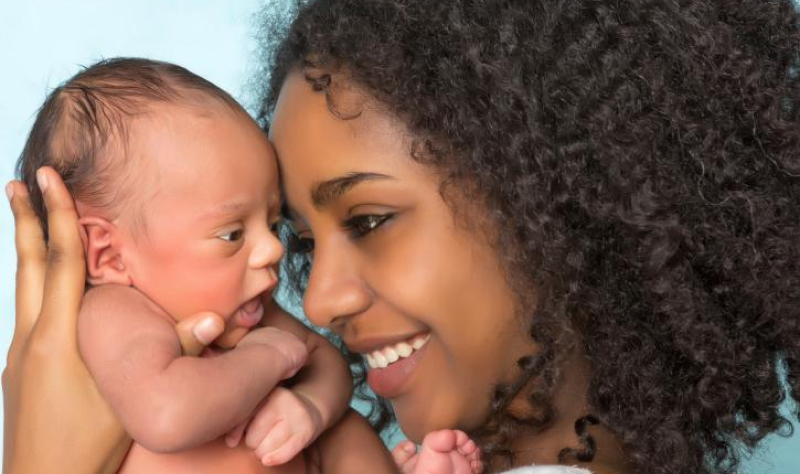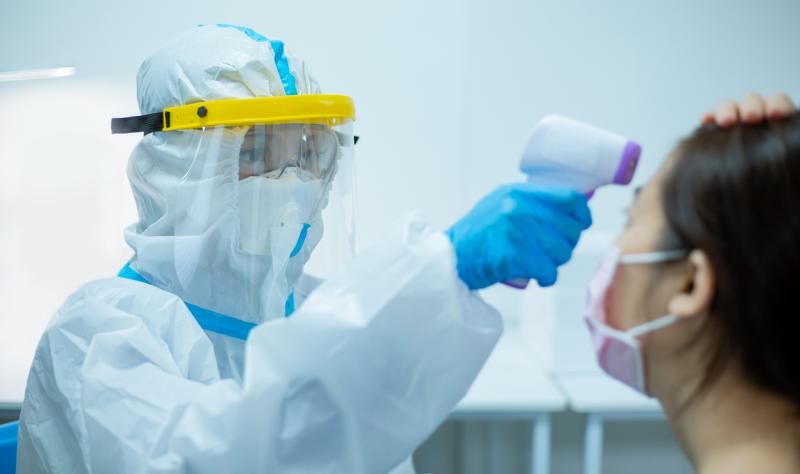COVID in California: Moderna dual booster shows ‘superior’ antibody response
COVID in California: Moderna dual booster shows ‘superior’ antibody response San Francisco Chronicle


Amid rumbles of an upcoming winter COVID surge, case numbers and hospitalizations in the Bay Area remain reassuringly flat. But scientists and policymakers are keeping a close eye on small signs of local upticks and on emerging variants that could cause trouble — though not the “nightmare” proclaimed in some quarters. The White House says it’s unlikely the U.S. will need to resort to masking mandates or limits on indoor gatherings, but fending off another surge relies in part on uptake of the reformulated booster shots, which still remains worrisomely low.
FDA authorizes first over-the-counter saliva test
The U.S. Food and Drug Administration on Tuesday issued an emergency use authorization for the first over-the-counter coronavirus molecular test authorized for use with saliva specimens. The Metrix COVID-19 Test, developed by Aptitude Medical Inc., is a single-use in vitro diagnostic test for the detection of the virus that causes COVID-19. “This test is authorized for non-prescription at-home use with anterior nasal (nares) swab and saliva sample, self-collected from people aged 14 years or older, or adult-collected from people aged 2 years or older, including people without symptoms or other epidemiological reason to suspect COVID-19,” the agency said. Individuals may use their preferred sample method, and the results typically take 30 minutes to appear.
Moderna booster demonstrates “superior neutralizing antibody responses,” data show
Moderna on Wednesday released new clinical data on its bivalent COVID-19 vaccine booster, demonstrating that 90 days after administration to previously vaccinated and boosted participants the shots “elicited a superior neutralizing antibody response” against omicron BA.1. The boosters also proved durable against omicron subvariants BA.2.75 and BA.4/5 after 28 days. “Our bivalent boosters continue to demonstrate a strong, enduring response to COVID-19 variants of concern,” said Stéphane Bancel, the Moderna CEO. “Clinical trial data now indicates that the superior immune response produced by our bivalent booster has durability for at least three months. As COVID-19 remains a global threat and a leading cause of death globally, this is an encouraging development, showing that a bivalent booster dose will offer important protection leading into the winter months.”
Novavax vaccine booster gets emergency use authorization
The U.S. Food and Drug Administration issued an emergency use authorization on Wednesday for Novavax’s COVID-19 vaccine as a booster shot for adults. That includes individuals who initially received the Pfizer or Moderna mRNA shots. The Novavax vaccine, which was cleared for use as a primary series in July, uses traditional protein-based technology, which federal health officials hoped would make it more palatable to some vaccine holdouts. The booster formula only targets the original strain of the coronavirus, unlike the mRNA shots which have been reformulated for the omicron subvariants. “The U.S. now has access to the Novavax COVID-19 Vaccine, Adjuvanted, the first protein-based option, as a booster,” Stanley Erck, president and CEO of Novavax, said in a statement Wednesday. “According to CDC data, almost 50 percent of adults who received their primary series have yet to receive their first booster dose. Offering another vaccine choice may help increase COVID-19 booster vaccination rates for these adults.”
Harvard to require bivalent boosters for students
Harvard University is among the first in the U.S. to announce it will require all students on campus next year to get the updated bivalent vaccine against COVID-19. Dr. Giang Nguyen, associate provost for campus health, said in an email on Monday that was reviewed by NBC Boston that beginning in January, students who do not have religious or medical exemptions must have received the new boosters — which target the original coronavirus strain and the dominant BA.4 and BA.5 omicron versions.
Masking requirement unlikely to make a comeback, says White House COVID czar
With newer COVID-19 subvariants in circulation alongside the flu and RSV, there is some anticipation that federal health officials may reintroduce some familiar mitigation measures this winter such as requirements for indoor masking, social distancing or limiting large gatherings. But Dr. Ashish Jha, the coordinator of the White House COVID-19 Response Team, said that is unlikely. “I just don’t think that’s where we are as a country anymore,” he told Yahoo Finance at the 2022 All Markets Summit. “Right now, we do have widespread availability of these brand new bivalent vaccines that are free, widely available. Pretty much everybody is eligible for it. We have treatments. We have lots of testing capability in that context.” While he did express concern about a potential “twindemic,” with flu and COVID cases putting a strain on the nation’s health care system, he noted that the U.S. is better prepared to handle a potential surge now than it was during the first two years of the pandemic. “I don’t think we’re going to need to do anything that resembles what we had to do in previous winters,” Jha said. “I really do think we’re in a very, very different place.”
What’s the truth about the so-called ‘nightmare variant’ of COVID?
While the United States contends with the newly detected COVID omicron BQ.1 subvariants, another highly mutated strain of the coronavirus called XBB is tearing across Southeast Asia, where in some countries, it has caused the number of cases to double in a day. Some more sensationalist reports have called XBB a “nightmare variant” due to its apparent ability to evade immunity and dampen some therapies. But infectious disease experts say it is too soon to jump to such broad conclusions. “That is pretty irresponsible reporting because it’s impossible to know what all these variants mean,” said UC Berkeley infectious disease expert John Swartzberg. Read more about the new variant that set off alarmist headlines.
Marin County sees “concerning” signs of a fall surge
Health officials in Marin County warned of an increase in virus activity in the region, noting that case rates have risen from 26 to 29 per day over the past month. “At the same time, our present positivity rate has increased from 4.5 to 6.5 percent — that’s a 30% net increase in the proportion of PCR tests performed that are positive,” Marin County’s Public Health Director Dr. Matt Willis said during a video briefing posted Friday. He noted that since the start of the pandemic, every surge in the county has been preceded by a similar uptick in a positivity rate. Willis also said the amount of virus samples detected in the region’s watersheds had stopped declining and the health department was “following that closely.”
It is likely that the county is experiencing a second BA.5 surge, Willis added. “Surges generally are occurring when a new variant arrives. This means waning immunity, changing weather, and/or changing behaviors are the culprit. Whatever the reason, it’s concerning for us.” He said that newer subvariants circulating, such as BQ.1, could amplify the fall wave and urged residents age 5 and over to get the new updated bivalent boosters as soon as possible. So far, only 20% of Marin County residents age 50 and over who are at highest-risk of getting seriously ill or dying if infected have received the improved shots. “The height of the coming wave and the number of residents we lose or end up in the hospital will be determined mainly by how many of us are vaccinated.”
Researchers refute claims of creating “deadly” new strain in lab
Boston University has refuted a series of articles making “false and inaccurate” claims about research at its National Emerging Infectious Diseases Laboratories. The reports, which first appeared on Monday in the U.K.’s Daily Mail tabloid and was subsequently picked up by Fox News, said researchers at the lab had “created a new deadly COVID strain.” In a statement released Monday, officials said, this research made virus replication “less dangerous.” The study set out to compare the spike proteins on the coronavirus omicron variant against the original virus strain. The Daily Mail suggested in its headline that the researchers had created a “deadly COVID strain with an 80 percent kill rate.” Ronald B. Corley, chair of microbiology, said of the news reports, “They’ve sensationalized the message, they misrepresent the study and its goals in its entirety.”
Slow COVID booster uptake worries Bay Area health officials
Bay Area health officials are worried that not enough people are rolling up their sleeves to get the updated bivalent COVID-19 booster shots ahead of the upcoming holiday season. “What we’ve seen so far is a very slow and sluggish uptake of these boosters,” Dr. Sara Cody, the Santa Clara County health officer, said at a briefing Monday. “Among those who are eligible, just 11% of people living in our county have gotten their booster shot.” Read more here about bivalent booster uptake in the Bay Area.



